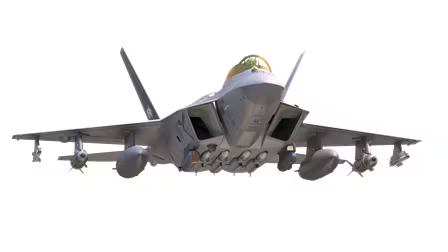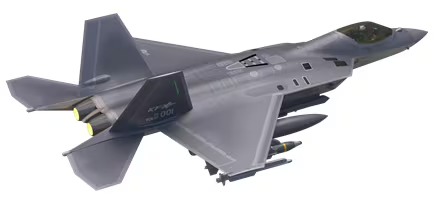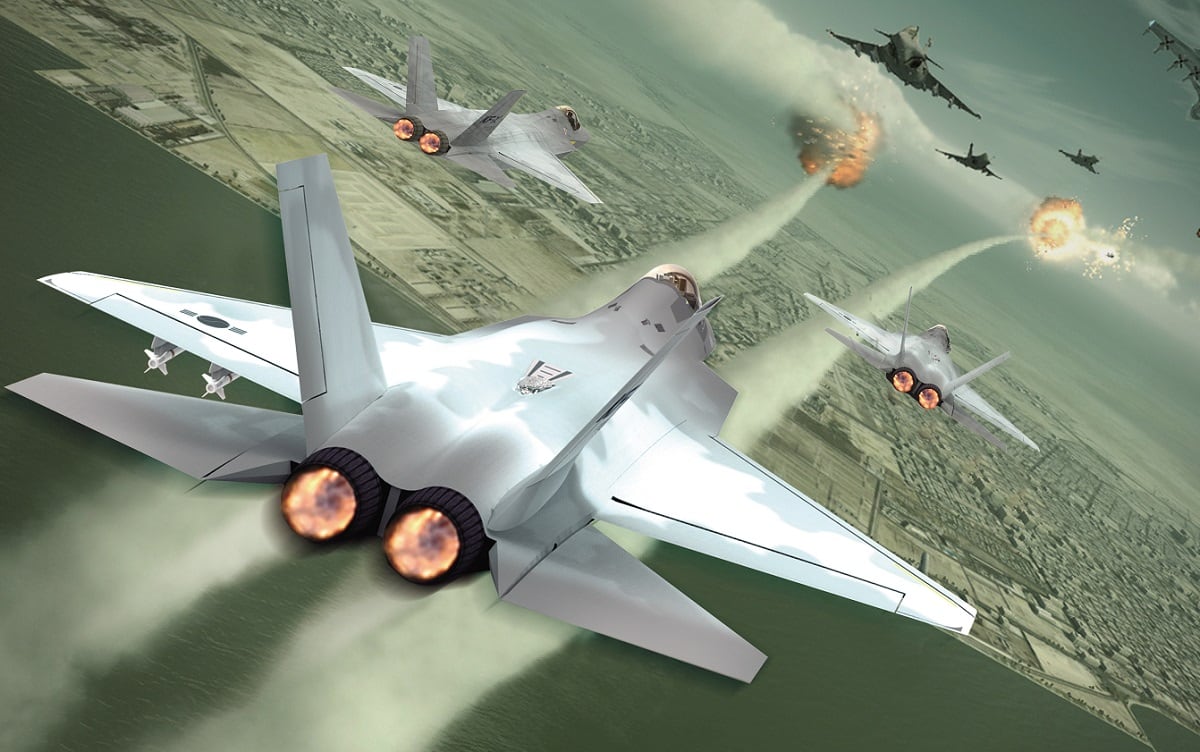SEOUL, South Korea ― South Korea’s arms acquisition agency unveiled June 29 the preliminary design of the KF-X fighter aircraft, nearly 30 months after the launch of the indigenous fighter development program in January 2016.
The disclose of the preliminary KF-X design came after the Defense Acquisition Program Administration, or DAPA, held a preliminary design review, or PDR, between June 26 and June 28 of the 4.5-generation twin-engine jet to decide whether to proceed to the next phase of critical design review, or CDR.
“Through the PDR, we’ve confirmed that all system requirements are met in the preliminary design so as to enter the CDR stage,” said Jung Kwang-sun, head of DAPA’s KF-X Program Group. “We plan to complete the detailed design work by September 2019 and begin the production of prototypes.”

The unveiled design, codenamed C-109, has been completed following repeated wind tunnel tests and computational fluid dynamic analysis, he added.
Notably, the disclosed photos of the KF-X design shows the jet is armed with European missile systems. Four Meteor long-range air-to-air missiles developed by MBDA are shown to be nestled under the fuselage, while two IRIS-T short-range guided air-to-air missiles are mounted on respective wingtip launchers.

“It’s the first time to see an official image of the KF-X jet equipped with European missiles,” said Kim Dae-young, a research fellow of the Seoul-based think tank Korea Research Institute for National Strategy. “That means KF-X engineers have modified the jet’s design to carry the European weapons systems in place of U.S. ones.”
The DAPA originally preferred fitting the KF-X aircraft with U.S. weapons systems, such as Raytheon-built AIM-120 and AIM-9 Sidewinder missiles, but the U.S. government has yet to approve the export license of the missiles, according to DAPA officials.
A DAPA source told Defense News, however, that his agency is still open to the possibility of U.S. air-to-air missile integration into the KF-X jet.
“Meteor and IRIS-T missiles are, in fact, more expensive than U.S. ones,” the source said, speaking on condition of anonymity. “Not just the cost matters ― U.S. weapons systems are easier to be integrated into the jet, so if the U.S. government shows a positive sign of offering its air-to-air missiles, we’ll discuss it for sure.”
The KF-X development is led by the DAPA-affiliated Agency for Defense Development and Korea Aerospace Industries, the country’s only aircraft developer, with a global partnership with Indonesia, which is obliged to burden 20 percent of the development costs.
RELATED

The project aims to produce more than 120 cutting-edge fighters to replace the aging fleet of F-4s and F-5s. A first flight is planned in 2022, with testing and evaluation to take place until 2026.
On May 31, the DAPA announced that the preliminary design of KF-X’s active electronically scanned array radar was completed to move to the critical design phase.
The prototype of the KF-X radar are being developed by Hanwha Systems with the help of Israel’s Elta Systems, which is in charge of testing the AESA radar.
Email: jeff@defensenews.com
Jeff Jeong was the South Korea correspondent for Defense News.








